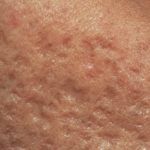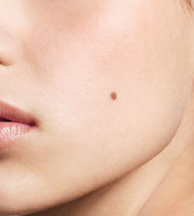Deep acne marks also known as atrophic scars are characterized by pits or craters in the skin. This type of acne scar can leave the face disfigured and have detrimental effects on one’s self-esteem. Although this type of scarring can be very difficult to heal and improve, CO2 Laser technology is the best method for atrophic skin resurfacing and scar diminishment. It works by sending short,  concentrated beams of light to the area of skin while removing the skin in layers. The new skin that is formed during healing will appear youthful and tighter. This process takes about 2 weeks.
concentrated beams of light to the area of skin while removing the skin in layers. The new skin that is formed during healing will appear youthful and tighter. This process takes about 2 weeks.
The newest advancement in laser technology is fractionated laser therapy or Focal Acne Scar Treatment known as F.A.S.T. This new method yields similar results to typical laser treatments, but the difference is that this method treats a fraction of the skin, meaning that the energy targets damaged cells, destroying them, while leaving other areas of the skin unharmed. This method delivers fast, lasting results due to the fact that the skin is removed fractionally. The advantages to this method are increased safety, increased comfort, and decreased healing time.
When choosing laser treatment, make sure to speak with your dermatologist about which option is best for you and your condition.

